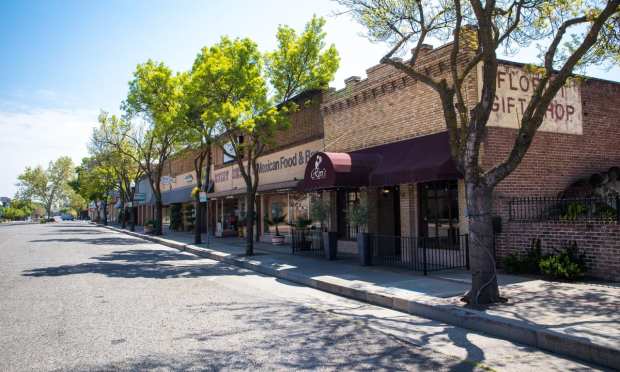PPP Round Two: Main Street SMBs Get New Access To Funding

When the $900 billion coronavirus relief bill is finally enacted, $325 billion in aid will be earmarked for small- to medium-sized businesses (SMBs).
The bulk of those SMB funds, $284 billion, are contained in a slightly modified version of the Paycheck Protection Program (PPP).
SMBs now need this money as the first round of PPP funding is running dry for those who first applied over six months ago. Small firms surveyed by Goldman Sachs indicated that they are desperately in need of another round of emergency PPP funding, CNBC reported this month.
“They really have needs; 90 percent of them have exhausted their PPP funding at this point,” Goldman Sachs CEO David Solomon said, per CNBC. “More than half of them have had to lay off employees and really constrain their businesses.”
And as COVID-19 numbers have been climbing, those constraints are looking to become even tighter, as new lockdowns are starting to go into effect in the U.S. and around the world. Shutdowns, PYMNTS’ latest SMB survey data demonstrates, make entrepreneurs and SMB owners quite nervous and looking to pivot quickly to the next storm.
PYMNTS research shows that although Main Street SMBs overall are more optimistic about the pandemic’s impact on their bottom lines now that they have been in it for months, there are still many that are struggling to stay afloat, especially given concerns about a second shutdown. Forty-five percent of Main Street SMBs say they are “very” or “extremely” sure they would be able to stay open if new lockdown measures are imposed, while the remaining 55 percent are between “not at all” or only “somewhat” sure they would be able to remain open.
The new infusion of PPP funding, however, could help to head off those layoffs and shutdowns.
PPP2 is at base quite similar to the first round of PPP with a few key revisions.
First up, firms can apply again providing they have 300 or fewer employees, have used or will use their entire first allotment of PPP funds and can show a 25 percent gross revenue decline at minimum in any 2020 quarter compared with the same quarter in 2019. The loans will now also include sole proprietors, independent contractors and eligible self-employed individuals.
PPP2 also allows borrowers that returned all or part of a previous PPP loan to reapply for the maximum amount available to them. The funds can be used to cover payroll, rent, covered mortgage interest and utilities. PPP2 adds worker protection, facility modification, personal protective equipment (PPE) purchase, supplier payments and costs of upgrading technology.
To be eligible for full loan forgiveness, PPP borrowers will have to spend no less than 60 percent of the funds on payroll over a covered period of either eight or 24 weeks — the same parameters PPP1 had when it stopped accepting applications in August.
So, is PPP ready to step in and save the SMB day? That is a tricky call since the first iteration of the program and Main Street lending efforts from the Federal Reserve and other agencies have been, at best, mixed in terms of success.
The first efforts at SMB stimulus had a bumpy rollout and confusion over which firms were truly eligible. That meant, according to PYMNTS data, through the spring, the share of SMBs which had taken the plunge to apply for Small Business Administration (SBA) loans stood at about 33 percent (this includes all SBA loans), while a relatively higher percentage of firms had opted to reduce payrolls to mitigate the external pressures of the economy and the pandemic.
And many of those firms that have kept operations humming have done so by tapping into the personal till (37 percent, while 26 percent are using personal credit cards), as roughly half of those surveyed have said that they’d seen cash flow trouble, almost wholly attributable to the pandemic.
Moreover, despite the staggering size of the first aid package, it didn’t do very much to make Main Street SMBs feel any more stable at the time when it was first passed. The share of SMBs whose owners believed their firms would survive the pandemic remained largely unchanged from March 24, with just an additional 0.2 percent of SMBs feeling confident on April 6. Meanwhile, there was a 0.1 percentage point decrease each for the share of SMB owners who felt unstable and the portion who felt unsure about the pandemic’s impact on their survival prospects since the government passed the relief package.
Compare that to the more recent changes in confidence that the vaccine has brought on. The approval of vaccines alone improved merchants’ confidence in their survival by 1.8 percentage points. But the concerns about shutdowns, notably, took a big bite out of the confidence baseline, according to PYMNTS data. In the event of new lockdowns, 8.5 percent fewer Main Street SMBs said they’d be hopeful of surviving.
Those lockdowns it seems are rolling out as the virus cases continue to rise. Now that the first-round bugs have hopefully be ironed out, can the cash infusion through PPP interest merchants enough this time around? Can the program keep merchants and their confidence from falling off a cliff?
It seems we have a few weeks of waiting before we find out for sure.
